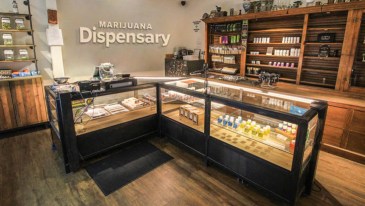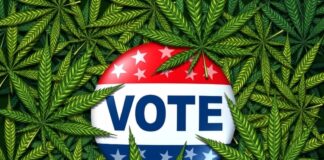States with fewer licensed marijuana retail stores per capita are less effective at disrupting illicit market sales than are jurisdictions where shops are more widely available, according to data compiled by Whitney Economics and the online content provider Leafly.com.
The report estimates, “States with roughly 20 to 40 legal regulated stores per 100,000 residents, in general, have captured 80 percent to 90 percent of all cannabis sales in the legal market.” By contrast, “States with single-digit stores per 100,000 residents tend to struggle to capture legal sales, with the illicit market still accounting for 30 percent to 50 percent of sales. States with less than one store per 100,000 residents remain dominated by the illegal street market.”
NORML’s Deputy Director Paul Armentano has similarly argued that local bans on cannabis retailers perpetuate the unregulated market. Writing in a recent op-ed, he opined: “Local moratoriums banning the establishment of licensed cannabis retailers do nothing to limit local residents’ access to cannabis; they only limit their access to legal cannabis. It’s time for local officials to put an end to the NIMBYism and unwarranted fears surrounding the establishment of marijuana retailers. Municipalities need to embrace this reality and provide the necessary oversight in order to hold these businesses accountable and to make this marketplace safe, transparent and profitable for the community.
Numerous other analyses have reported an association between licensed cannabis retailers and rising home values. Separate data has also reported that local jurisdictions which permit licensed marijuana operations experience job growth at higher rates than do localities that prohibit them.
Full text of the Leafly/Whitney Economics report, “Opt-out towns are encouraging illegal marijuana sales,” is available online. Additional information is available from NORML’s fact-sheet, ‘Societal Impacts of Cannabis Dispensaries/Retailers.’











